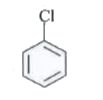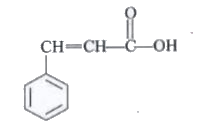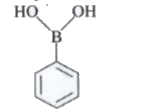A
B
C
D
Text Solution
AI Generated Solution
The correct Answer is:
|
Topper's Solved these Questions
ALKENE, ALKANE & ALKYNE
ALLEN|Exercise EXERCISE-2|103 VideosView PlaylistALKENE, ALKANE & ALKYNE
ALLEN|Exercise EXERCISE-3|99 VideosView PlaylistALKENE, ALKANE & ALKYNE
ALLEN|Exercise EXCERSISE-3|28 VideosView PlaylistAIIMS 2019
ALLEN|Exercise CHEMISTRY|40 VideosView PlaylistALKYL AND ARYL HALIDE
ALLEN|Exercise EXERCISE-05 (B)|35 VideosView Playlist
Similar Questions
Explore conceptually related problems
Knowledge Check
A
B
C
D
Submit
A
B
C
D
Submit
A
B
C
D
Submit
Similar Questions
Explore conceptually related problems
ALLEN-ALKENE, ALKANE & ALKYNE -EXERCISE-1
- The major product formed in the reaction is:
03:57
|
Play - The electrophilic aromatic substitution of a compound C(6)H(5)Y produc...
03:10
|
Play - Which of the following is an o-, p-directing but deactivating substitu...
03:07
|
Playing Now - The major product formed in the reaction is :
02:54
|
Play - The dipole moment of chlorobenzene is 1.6Dm The expected dipole moment...
02:27
|
Play - What happens when benzene is treated with a mixture of concentrated HN...
06:06
|
Play - Which of the following substituted benzene derivatives would produce t...
02:03
|
Play - In the sulhponation of benzene, the active electrophilic species is :
02:09
|
Play - The Friedel-Crafts reaction of benzene with n-butyl chloride at 0^(@...
02:54
|
Play - Sulfonation differs from most of electrophilic aromatic substitution r...
04:11
|
Play - Cumene on treatment with KMnO(4) gives -
02:18
|
Play - Benzene reacts with CH(3)COCl in the presence of anhy AlCl(3) to give
00:59
|
Play - then the major product A is -
03:17
|
Play - Arrange the following in correct activating order towards EAS - {:(u...
04:16
|
Play - Consider the following reaction sequence, CH(3)C-= CH overset(aq.H(2...
03:07
|
Play - Consider the following reaction sequence CH(3)C-=CHunderset(" 2 mole...
02:40
|
Play - Consider the following chlorides: The order of reactivity of A, B...
03:36
|
Play - In the following reaction sequence Ph -C -= CH underset(Hg^(2+)) ove...
04:15
|
Play - Consider the following reaction. CH(3)overset(O^(16))overset(||)C-O^...
02:30
|
Play - Consider the following reaction sequence, underset(2 H(2)O)overset ...
03:51
|
Play



